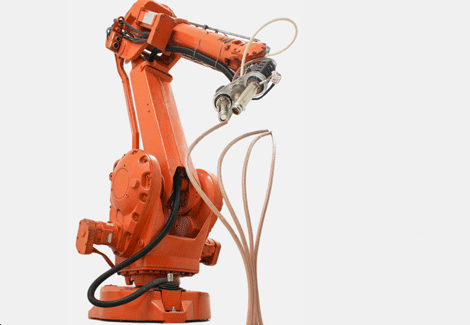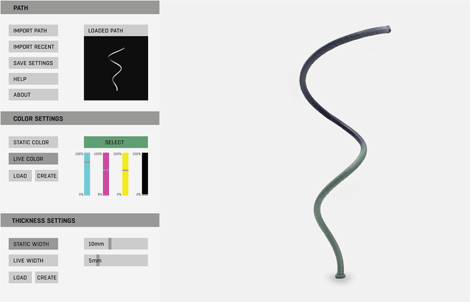
Whatever your initial thoughts (“an assembly robot throwing up churros with two paint-strippers baking it…”, “Giant frickin’ 3Doodler“), Mataerial is an intriguing prospect for the direction of 3D printing.
A collaborative project between Institute for Advanced Architecture of Catalonia and the Joris Laarman Studio, its ‘anti-gravity’ modelling can apparently manufacture structures of ‘almost any size and shape’; without support material; on any given working surface regardless of its inclination or smoothness, and in programmable full colour material
“This method gives us a flexibility to create truly natural objects by making 3D curves instead of 2D layers. Unlike 2D layers that are ignorant to the structure of the object, the 3D curves can follow exact stress lines of a custom shape,” proclaims the Mataerial website.

Its an exciting proposition: for the architectural industry (for which it’s been designed) a machine that can create vertical structures has a practical use in present-day construction. For manufacturing, organic shapes or initial frameworks would benefit, as would anything with complex overhangs.
Yet the biggest proposition is to how 3D printers will act and build in the future. The standard 3D printer is a box that prints onto a smooth flat base, from the ground up. This could change all that.
It has a lot of questions to answer – accuracy, material make-up, durability, cost – before industry can take it entirely seriously, but it’s a prototype that should have the big names in 3D printing rushing to find out more.
Mataerial Introduction from Mataerial on Vimeo.






